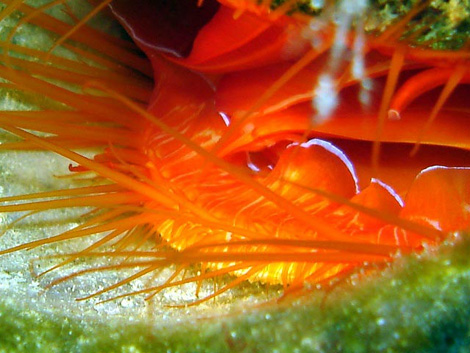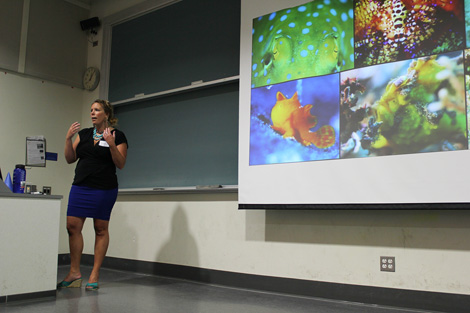Back in 2010, while diving in Indonesia, Lindsey Dougherty first witnessed the flashing behavior of the so-called “electric clam” or “disco clam,” Ctenoides ales. She decided then and there that the focus of her Ph.D. would be the study of these fascinating bivalve mollusks.

Now, four years later, Dougherty reports in the British Journal of the Royal Society Interface just how the flashing works. A nice description of the mechanism and a video showing the flashing behavior is provided in Robert Sanders’ article on UC Berkeley’s News Center website. Also see The Royal Society’s news blurb (with more video footage) about the study, listen to Lindsey describe her research in a New York Times Science Times podcast on iTunes, or check out this ABC News video that aired on July 23.

Dougherty is now looking into the reasons for the flashing behavior. Perhaps it attracts prey or serves as a warning to potential predators; or maybe it’s a signal to juveniles of its own species that this is a good substrate on which to settle. We’ll have to wait and see what Dougherty finds out!
Here are some of the other news outlets and organizations that picked up the disco clam story:
- Nature
- Slate
- Wired
- National Geographic News Watch
- New York Times
- Science Recorder
- New Scientist
- Huffington Post
- Reuters
- Berkeley Science Review
- Science News
- Discovery
- Christian Science Monitor
- Oceana
- Daily Mail
- Phys.org
- Popular Science
- Surface Optics Corp.
- Discover
- Science News
- Scientific American
- Fox News
- The Royal Society
- Reef to Rainforest Media